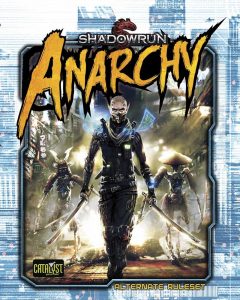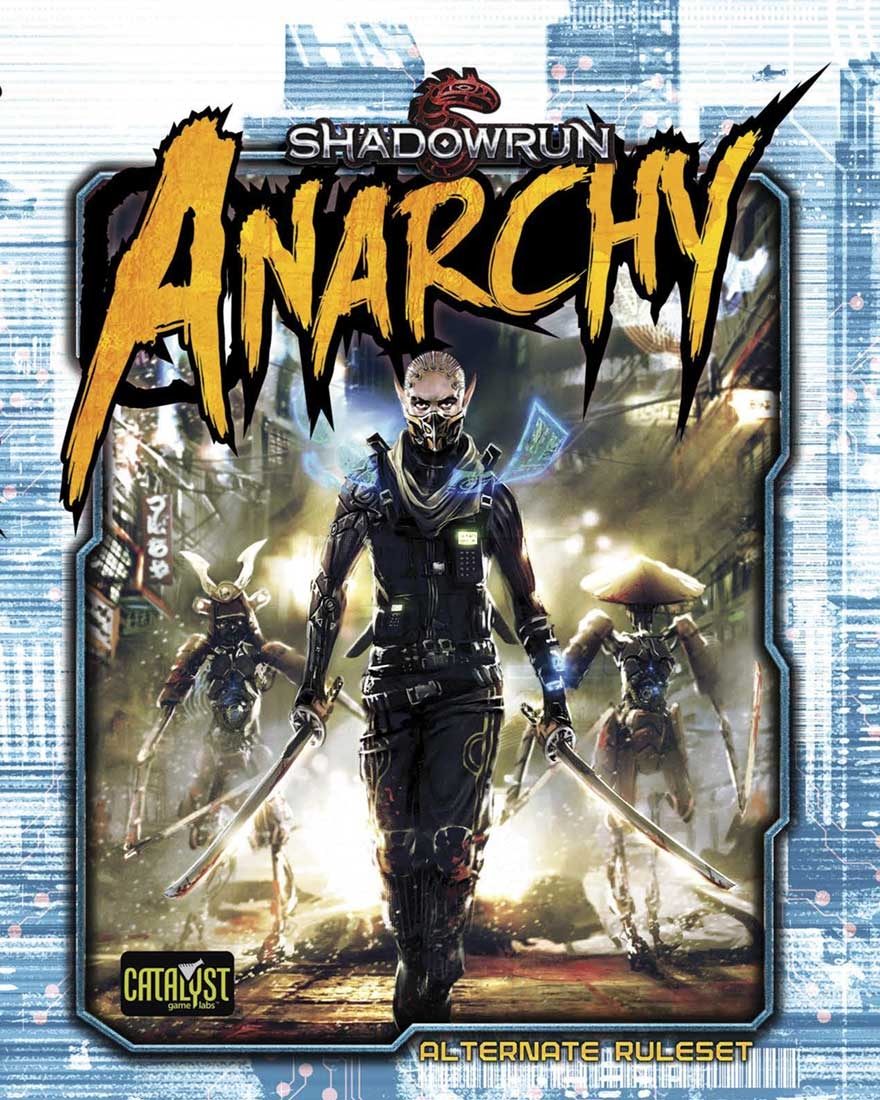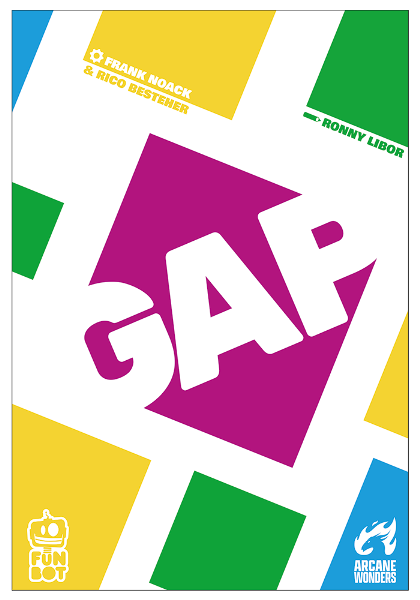
Shadowrun: Anarchy
Shadowrun: Anarchy is a Cue System-based version of the fantasy cyberpunk Shadowrun RPG, written by Randall N. Bills, Patrick Goodman, Jason M. Hardy, Philip A. Lee, Aaron Pavao, O.C. Presley, and Russell Zimmerman and published by Catalyst Game Labs.
By Aaron T. Huss

Learn more about Shadowrun: Anarchy here
Purchase Shadowrun: Anarchy here
Find other Cue System posts here and here
We’re doing something a bit different for the Shadowrun: Anarchy review. Editor-in-Chief Aaron Huss is reviewing from the standpoint of the Cue System in Part 1. Feature columnist Cape Rust is reviewing it from the standpoint of Shadowrun in Part 2. This way you get two different viewpoints of the same book.
Shadowrun: Anarchy is Shadowrun using the Cue System, from Cosmic Patrol and Valiant Universe RPG, to power the mechanics. The setting is the same and the overall flavor of the setting’s options (gear, matrix, spells, etc.) are the same. In fact, Shadowrun: Anarchy even includes a guide to convert characters (and likely sourcebooks) between the two gaming systems. While the Shadowrun game system is quite rules-heavy, Shadowrun: Anarchy is rules-medium and takes many aspects of Shadowrun gameplay and turns it into narrative controlled by the players or GM. Although based on the original Cue System, this version is different to accommodate the wealth of options in a cyberpunk environment (although the very core of the game system is the same).
I’m a fan of rules-light and rules-medium games. Some games I don’t mind additional rules, but if there’s an option with fewer rules, I’d choose the fewer rules instead. I find the Shadowrun setting to be incredibly rich and quite exciting; the mechanics, not so much. Not that I think they’re bad mechanics, they’re just not my preference. When Catalyst Game Labs asked if I’d like to review Shadowrun: Anarchy as a version of Shadowrun powered by the Cue System, I jumped at the opportunity! I was already a fan of the Cue System with the Valiant Universe RPG being possibly the only superhero game I would play (although I also like Icons, I really like the Valiant Universe). I like the freeflow, narrative style for Comic Book-styled games.
After really taking in the breadth of Shadowrun: Anarchy, I will state that I wasn’t let down.
Shadowrun: Anarchy is not the same Cue System found in Cosmic Patrol or Valiant Universe RPG. Nor could it be really. Shadowrun: Anarchy has so many options for the excitement of cyberpunk that you simply need to add mechanics to support them. The good news is Catalyst Game Labs kept it simple to maintain that Cue System appeal. Cues, tags, and the narrative aspects are there, but there are some interesting changes when moving to this version.
One of the big changes is the move from a Lead Narrator to a single Gamemaster. After I thought about it, I understood why though. In Shadowrun, you don’t want the players to know everything, so a single GM is really the best option. Another big change was the move from escalating dice (d4-d12) to dice pools. This I really don’t like, but I understand why. It makes converting from one system to the other much simpler, but it also adds a lot of dice to gameplay and changes how other aspects of the Cue System are implemented. For instance, in Valiant Universe RPG, adding a “Power” dice allows you to roll an extra die and discard the lowest result; Shadowrun: Anarchy still uses a dice pool where you count the number of successes rolled. I prefer the original design of the Cue System, but that’s just a personal preference.
One thing to note about Shadowrun: Anarchy, which many other reviewers are noting as well, is the editing. It’s common for people to miss something in editing, and that doesn’t really bother me (unless they miss a lot of things). What bothers me is when mechanics are referred to by the wrong name. Shadowrun: Anarchy uses “Contract Briefs”; Cosmic Patrol uses “Mission Briefs”. Multiple times in this core rulebook, the two were used interchangeably and a couple times, “Event Briefs” was used, which comes from Valiant Universe RPG. I don’t know where this third one came from, but it’s just plain wrong. Another incorrect mechanic was the Gamemaster or GM. Shadowrun: Anarchy uses a Gamemaster/GM; Cosmic Patrol and Valiant Universe RPG use a Lead Narrator/LN. There were multiple times where the term “LN” was used instead of “GM”. Those were the big two; there may have been others.
The artwork, however, was amazing. Shadowrun artwork is always cool and there’s lots of it in this book. Not as much setting artwork as the Shadowrun 5th Edition book, but definitely lots of character-focused artwork. This core rulebook focused much more on the characters and much less on the setting compared to the Shadowrun core rulebook. Because the game is narrative and character/player-driven, I think this was a good choice. If you want setting material, there is already a lot of Shadowrun books out there with this information.
Shadowrun: Anarchy is a perfect entry into the Shadowrun universe for people like me who prefer less mechanics and more freeform gaming. I like the Cue System version it utilizes, although I wish it would have kept the escalating dice. Regardless, it will be my choice for running Shadowrun games.



